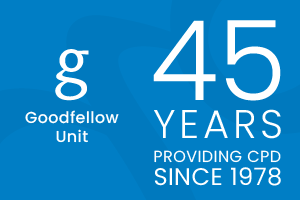
This MedCase was first published in November 2018. It was updated by Dr Hazel Fuiava, MBChB, Dip Paeds, FRNZCGP.
Polypharmacy, the use of multiple regular medications, is increasingly common as the population ages and more preventive therapies become available.
Polypharmacy is ill-defined, though for reporting purposes is often characterised as the use of five or more medications.1 However, multiple medicines may be appropriate and beneficial in certain situations; polypharmacy in secondary cardiovascular disease prevention usually improves duration and quality of life.2
The challenge for clinicians is to identify problematic polypharmacy. This arises when harms outweigh the benefits of one or more of the medications, when the indications for the medications are no longer relevant, or where there is a risk of adverse events or interactions. In these situations, polypharmacy is associated with serious harms including falls, fractures, hospitalisation, delirium, hospitalisation and death.3,4
This case study looks at problematic polypharmacy and suggests ways to prevent polypharmacy related harms.
Mrs F, an 88 year old woman, comes to see you because she has been feeling giddy. She is concerned as she wants to drive out of town for a bridge tournament on Friday.
On further questioning, she has associated nausea, headaches and lethargy. You elicit no history of falls, trauma or infective symptoms. The giddiness started about a week ago, soon after she began taking a new pill prescribed by her dermatologist for hair loss. She cannot recall the name of the medication, nor any particular advice from the dermatologist.
Mrs F has a past history of stroke two years ago with residual balance impairment, hypertension, macular degeneration, osteoarthritis, mild renal impairment, gout and irritable bowel syndrome. She wears reading glasses and has hearing aids.
Her usual regular medications are perindopril, atenolol, aspirin, atorvastatin, allopurinol and omeprazole.
She has previously been prescribed PRN paracetamol and zopiclone, which she takes on most days. She lives by herself and is still driving.
Clinically, she looks well. Her heart rate is 60 and she has a new mild postural drop in blood pressure from 110/70mm Hg sitting to 95/60mm Hg standing. Cardiorespiratory and cranial nerve examinations are normal, and specifically, there is no positional nystagmus. Her last bloods were 6 months ago and showed an eGFR of 31 ml/min/1.73m2.

Is Mrs F at risk from problematic polypharmacy?
Patients most at risk from problematic polypharmacy are:2
- Those receiving palliative care.
- Those with known poor adherence.
- Those with multiple prescribers involved in their care.
- Taking 10 or more medicines continuously.
- Taking 5 or more medicines continuously including at least one potentially problematic medication, or for one potentially problematic indication:
| Potentially problematic medications | Potentially problematic indications |
These are medications with a high risk of causing an adverse drug reaction (ADR), including:5
|
These are conditions in which ADRs are more likely. Included are:
|
The short answer is: yes, Mrs F is at high risk of problematic polypharmacy.
She is taking at least 6 medicines continuously, including four in the high-risk category: ACE inhibitor, beta-blocker, aspirin and zopiclone.
She has CKD, a high-risk condition for problematic prescribing. She also attends two specialist clinics (stroke and dermatology), and is under the care of the pharmacy for her gout management, so there are at least four prescribers involved in her care.
What problems could polypharmacy cause?
The most common problems arising from polypharmacy are:
- Increased chance of ADRs. The risk of an ADR is 13% with two medications, 58% with 5 medications, and 82% with 7 or more medications.3
- Increased risk of a prescribing cascade. A prescribing cascade occurs when ADRs or drug-drug interactions cause symptoms and signs that are misinterpreted as a new condition for which further medications are prescribed, compounding the polypharmacy.
- Falls. These are independently associated with polypharmacy.
- Poor compliance and adherence to the appropriate dosing schedule.
Polypharmacy is associated with an increasing incidence dehydration, acute kidney injury, delirium, hypoglycaemia, malnutrition, hospitalisation and death. Common symptoms associated with problematic prescribing are:
- dizziness
- confusion
- falling
- constipation
- nausea
- incontinence.
Mrs F comes to you with new dizziness, confusion and nausea; these are symptoms that feature commonly in cases of problematic prescribing.
You check your inbox and find a letter from the dermatologist describing a plan to start a low dose of spironolactone for hair loss, and asking that Mrs F see her GP in 1 week after having a blood test. You realise that Mrs F had doubled the suggested dose of spironolactone, and forgotten to have the recommended blood test, suggesting a possible memory impairment along with the other symptoms.
You ask Mrs F to stop taking spironolactone, and have urgent blood tests today with a plan to review her tomorrow morning. Later that day, you receive the results, which show sodium 118 and potassium 6.
You phone Mrs F to ensure the spironolactone and ACE inhibitor are stopped immediately, and arrange a same-day hospital admission for acute management of the electrolyte disturbance.
What has happened?
The addition of one medicine, spironolactone, led to:
- A direct adverse effect of hyponatraemia, compounded by poor renal function.
- Two interactions causing further adverse effects:
- firstly with the ACE Inhibitor causing increased serum potassium;
- secondly with Mrs F’s blood pressure-lowering medicines causing postural hypotension, and an increased falls risk.
How could this have been prevented?
Some tips for preventing harms related to polypharmacy are:
- Choose non-pharmacological interventions where possible in at-risk patients.
- Ensure that all prescribed medications have clearly documented indications.
- Have clear target ranges for clinical indicators such as blood pressure and HbA1c so that there are thresholds at which medicines should be adjusted.
- Look for opportunities to stop medications (downward titration may be required).
- Conduct a medication review in patients at risk of problematic polypharmacy, or find out if your Te Whatu Ora division has access to a qualified clinical pharmacist who can undertake a medication review for complex patients.
- Aim to review one medication per visit, with the aim of assessing all medications within a 12-month period.
- Proactively look for opportunities to perform medication reviews, for example:
- upon discharge from hospital or transfer to/from long-term care facilities, for example some practices have a system of phoning patients recently discharged from hospital to ask about any medication changes
- after a visit to a secondary care specialist
- perform an audit of your patients on >4 medications and ask them to come in for medications review.
Performing a medication review
Start with a medicines reconciliation. This means making a complete list of all the medications the patient is currently taking. Sources of information include clinic and discharge letters, Testsafe prescribing data, and the patient themselves. Don’t forget to ask the patient about over-the-counter medications they are taking.
- Some useful questions to ask:
- Do you have any concerns about any medicines you are taking?
- Have you been seen in a clinic or been admitted to hospital recently?
- Identify the current dose, regimen and indication for each medication, particularly check the amount of prn medicines being used – how many packs at home and what triggers the use of a PRN medicine.
- Record all allergies, intolerances, and reasons for stopping any previous medications.
- Consider the clinical indication and likely benefits and harms from each medication.
- Discuss goals of care with the patient, and family / whanau if appropriate, and agree a course of action.
- Identify any medications that can be stopped or altered:
- Avoid abrupt discontinuation of most medicines, especially ß-blockers, proton pump inhibitors, sedatives, antidepressants, opiates, gabapentinoids, anticholinergics. Taper these down slowly and review the patient regularly.
- When feasible, make a plan that involves only one or two medicine changes at a time. Put this is writing for the patient, and also in your Patient Management System
- Compliance packaging may make it easier to avoid confusion and errors when making gradual and hence a number of medication changes.
- Plan on-going reviews, especially in complex patients.
Taking action
Mrs F is discharged from hospital, and you see her for review.
Her pulse remains at 60bpm and her blood pressure is 132/80mm Hg, with no postural drop.
Together you agree that the risk of continuing spironolactone outweighs the potential benefits.
You phone the dermatologist to update them on Mrs F’s decision, and to discuss the harms caused by prescribing spironolactone in this high-risk setting.
Looking over Mrs F’s other medications, you prioritise the following medications for review over the next 6-12 months:
- Zopiclone
- Aim to gradually reduce the dose and frequency of use.
- Discuss other strategies including sleep hygiene and restricting time in bed.
- Atenolol
- Beta-blockers are no longer first line for management of hypertension. Beware of suddenly stopping; long-term use causes up-regulation of beta receptors, and a rebound increase in heart rate and blood pressure may occur if beta-blockers are stopped suddenly. Gradually titrate the dose down before stopping.
- Atenolol is renally excreted, and Mrs F’s poor renal function may have contributed to accumulation of the drug, as indicated by the heart rate of 60bpm.
- Omeprazole
- The risk of major bleeding on aspirin is high in patients aged over 85 years, so protection with a PPI is indicated while Mrs F is taking aspirin.
- Paracetamol
- Check the amount of PRN use and ensure that Mrs F knows the safe maximum dose. Check the New Zealand Formulary for maximum daily dose as per body weight).
- Check the amount of PRN use and ensure that Mrs F knows the safe maximum dose. Check the New Zealand Formulary for maximum daily dose as per body weight).
- Aspirin, atorvastatin, and perindopril are likely appropriate for secondary prevention, but the dose and adherence should be reviewed annually.
This MedCase was created in 2018 by Dr Vicki Mount, MBChB DipPaeds, and reviewed by Dr Linda Bryant Clinical Pharmacist MClinPharm, PhD, PGCert(Prescr), FNZHPA, FNZCP, FPSNZ, MCAPA, NZRegPharm.
Resources
Recognition of Learning Activities
Don't forget to log your time with The Royal New Zealand College of General Practitioners portal for recognition of learning activities.


